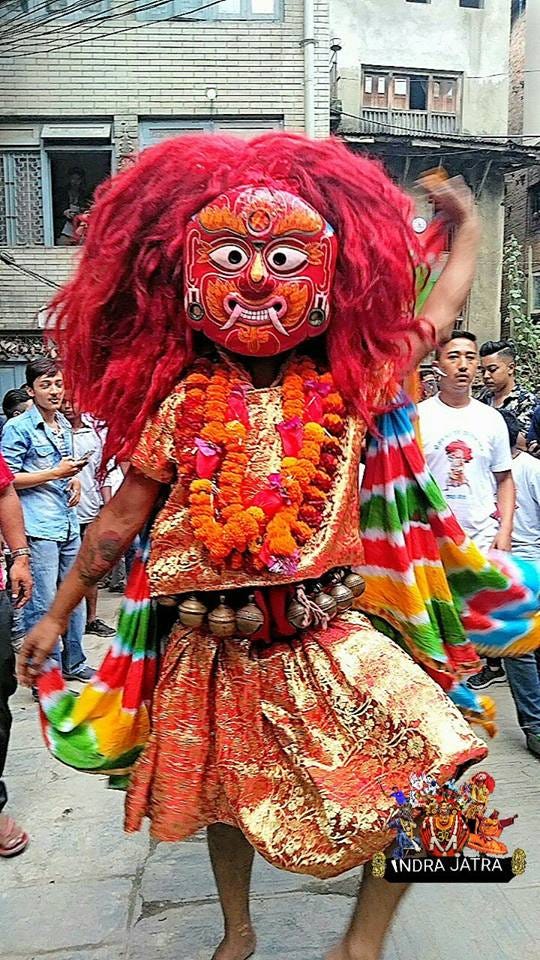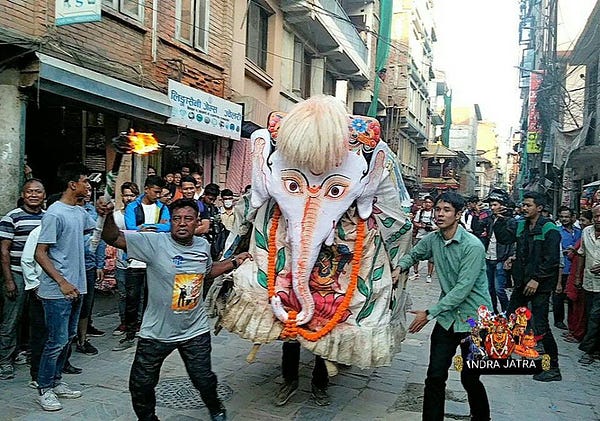राजेन मानन्धर
समाजय् साहित्यया खँ ल्हाइपिं यक्व दु । भाषा म्वाःसा जाति म्वाइ धकाः सछिदँ न्ह्यः धयातःगुलिं ला मसिउ, दक्व भाषाप्रेमी हे झीथाय् साहित्यकार । थुकिं भाषा म्वाकल वा मम्वाकल, व मेगु हे थासय् विवेचना याये, तर थुकिया लबः थ्व हे धाये कि झीगु साहित्य नेपाःया माध्यमिक कालय् जक मखु थ्व २१गूगु शताब्दीइ नं उलि हे तःमि, संख्यात्मक रूपं हे जक छाय् मजुइमा ।
सरकारी सुविधा कयाः ब्वलंगु गोरखा वा आःया नेपाली भाय्या साहित्य धुंकाः नेपाःया सछि व नीस्वंगू भाय् मध्ये दकलय् तःमिगु साहित्य दुगु भाय् झीगु हे खः धकाः कनेबलय् झीत गर्व जुइ । तर छगू न्ह्यसलं झीत दुनें दुनें कुतिं न्यानाच्वनी — झीसं साहित्यया अध्ययन यानाच्वनागु दु ला ?थन साहित्य धइगु हे छु धकाः न्ह्यसः तयेफु ।
मनूतय्सं साहित्य धकाः च्वये ससांनिसेंया थ्व न्ह्यसःया पुवंगु लिसः आःतकं मलूनि । छु साहित्य खः छु मखु अले छाय् साहित्य च्वइ अले व छाय् मनूतय्त यइ अथवा मयइ धइगु छलफल चर्चा परिचर्चा विश्व न्यंक हे जुयाच्वंगु दनि । थन साहित्यया परिभाषा बिइगु कुतः यायेमखु । अःपुक सामान्यतः जीवनया अर्थप्रकाश याइगु, मानव सभ्यतालिसे स्वाःगु भाय्या मार्फत न्ह्यब्वइगु थीथी विधाया — गथेकि महाकाव्य, चिनाखँ, उपन्यास, निबन्ध, नाटक इत्यादि — सिर्जनात्मक कलात्मक लेखनयात साहित्य धाःसा पाइमखु ।
थ्व धइगु ला नितान्त ब्वनाः थुइकेत, ई छ्यायेत, न्ह्यइपुकेत वा छुं भचा सयेकाः प्रेरणा कायेत मखुला ? साहित्य धइगु उलि हे मखु ला ? तर साहित्यिक कृति जक ब्वनाः विश्वय् ततःधंगु राजीनिक परिवर्तन हःगु अले राजनीतिकर्मीतय्सं च्वमिपिंत नं क्रान्तिया संवाहक धकाः नालाकाःगु झीसं ब्वनाच्वना । गनं देसय् वनेबलय् विद्वानतय्सं अन च्वंपिं साहित्यकारत नापलायेगु इच्छा याइ ।
पूर्वीय शास्त्रया आधारय् साहित्यया खँ ल्हाइपिंसं लिसालिसा कयाः धाइगु छता खँ —“साहित्यसङ्गीतकलाविहीनः साक्षात्पशुः, पुच्छविषाणहीनः ।” अथवा साहित्य, संगीत व कला मदुम्ह न्हिपं मदुम्ह पशु थें खः । अथे धायेबलय् झीगु समाजय् ला साहित्य यः धाःपिं मनूत तसकं म्हो जक खनेदु । साहित्यया सफू न्ह्यच्याकलकि जिं मथू धकाः न्हाय् कयेकुंकीपिं जक लुइ ।
अथेसा उपिं धाथें पशु हे जक ला ? अथे मखुसां थुकिं साहित्य धइगु मानव सभ्यताया छगू अभिन्न अंग धकाः थुइकाबिइ । अथे हे खःसा साहित्य धइगु ब्वनाः वांछ्वयेगु जुल ला ? थथे थःत मनू दयेकीगु साहित्यप्रति झीगु धारणा थथे तुच्छ जुइ ला ? हानं मेगु खँ स्वाइ — ब्वनाः वांछ्वयेगु हे जूसा थुकिया अध्ययन छाय् ?
थुकिया लिसः बिइ न्ह्यः खँ वइ, साहित्य अध्ययन धइगु छु ? अःपुक धायेगु खःसा साहित्यया अध्ययन धइगु छुं विशेष ल्यया तःगु साहित्यिक कृति वा उकिया अंश, गथे कि महाकाव्य, उपन्यास, बाखं वा चिनाखँयात ब्वनाः थुइकाः उकिया विश्लेषणात्मक तहलय् तक वनाः अध्ययन यायेगु व उकिया भाव पिज्वयेक प्रतिकृया वा समीक्षा च्वयेगु च्वयेफुम्ह जुइगु खः ।
छम्ह च्वमिया लागि भाय् हे छगू जक व हतियार खः गुकिं यानाः वं लखौंलख पाठकया नुगलय् राज याइ, वयात थः धइथे याकी, यःम्ह दयेकी, मयःम्ह दयेकी । छम्ह थःगु मिखां मखंम्ह पात्र थनाः वयागु निझ्वः प्यझ्वः वर्णन यानाः वयात निता स्वता खँ नवाकाः कायेगु नं मदुम्ह बिइगु नं मदुम्ह ब्वँमियात आकर्षण यायेगु अःपुगु ज्या मखु, उकियात स्यलाःगु भाषा हे माः ।
थथे जुल कि व छगू थाय् विशेष वा भाय् विशेषया साहित्यया दुग्यंगु ज्ञान दुम्ह मनू जुइ, वं साहित्यया धार प्रवृति थुइकाः सही वा गलत धायेफइ अले भविष्यय् व थाय् वा भाय्या साहित्ययात छगू क्वातूगु लँ क्यनेफइ । गुम्हस्यां धाइ, साहित्य धइगु सिर्जना खः, थुकिया अध्ययन जुइमखु, थ्व ला द्यवं बिउगु जुइ ।
खः, कालिदास ब्वनातःम्ह मखु, न झी नातिवज्र हे स्कूल वन । अथे सा न्ह्याम्हस्यां न्ह्यागु च्वःसां साहित्य जुइगु जूसा साहित्यया अध्ययन छाय् यायेमाल ? साहित्यं झीत समाजया अवस्था, अन दइगु विषम परिस्थिति, मानव स्वभाव, चरित्र, मानव जीवनय् भोगे मयासे मगाःगु थथ्याःक्वथ्याःयात न्हाय्कनय् थें क्यनाबिइ ।
इतिहासयात साक्षी तयाः मानवीय संवेदना वा भावनायात मनूतय्त म्हसीका बिइ । अले मनूयात अझ भावपूर्ण, सहयोगी अथे धइगु मुकं सभ्य दयेका बिइ । साहित्य धइगु न्ह्याम्हस्यां ब्वंसां उकिया च्वमित सीमित दयाच्वनी । छम्हेस्यां च्वःगु सफू विश्व परिवेशय् धायेगु खःसा लखौं लख पाठकयाथाय् थ्यनाच्वनी, उकिं उमिगु भावना, सोच व जीवनया लक्ष्य हे हिलाबिइ ।
अथे धायेबलय् उलि मछिसिया नुगः त्याकेमाःगु खःसा थम्हं छु च्वयाच्वना व सिइमाल, पाय्छि खः लाकि मखु, अले थुकिं समाजयात लँ क्यनी लाकि मक्यनी, हानं थुकियात समाजं स्वीकार याइ लाकि मयाइ धइगु नं ज्ञान दयेमाल । थ्व दक्व साहित्यया अध्ययनं जक लुखा चायेका बिइ ।
आः साहित्य धइगु छम्ह तःधंगु जातयाम्ह वा जुजु वा सःसिउम्हेस्यां च्वःगु जुइवं दक्वस्यां ब्वना हे बिइमाः धइगु बाध्यता मंत । बजार तःधं, मनूतय् न्ह्यःने थः यःगु कयाः ब्वनेगु मौका दु । अज्याःबलय् छम्ह च्वमिं थःगु च्वसा थातय् लाः लाकि मलाः धकाः सजग जुइमाःगु बाध्यात्मक अवस्था वःगु दु ।
सुयातं मययेक अथवा मनूतय्त ग्राह्य हे मजुइक च्वयाः थुकियात कयाबिउ, अथवा प्रशंसा हे यानाबिउ धइगु आग्रह तयेगु उचित जुइमखुत । थज्याःगु अवस्थाय् साहित्य अध्ययनया आवश्यकता खनेदयावइ । झीगु नेवाः साहित्य ख्यलय् फुक्क ब्वनीपिं हे च्वइपिं थें खनेदयाच्वन, थ्व छगू अपवाद जुइ ।
मखुसा च्वयेगु धइगु अज्याःगु कला खः गुकिया निंतिं विशेष अध्ययन, तालिम व सैद्धान्तिक ज्ञान माः । थन थाय् छाय् च्वयेगु धइगु न्ह्यसः झीगु न्ह्यपुइ कतानाच्वने यः, थुकिया थःत हे चित्त बुझे जुइगु लिसः मदुतले व मनू च्वमि जुइमखु । च्वयेगु धइगु जागिर खः नं, मखु नं । उकिं नकी मनकी धइगु यक्व धयाथें थाय्, भाय् व व मनूया खुबीया खँ जुल ।
गुम्हस्यां च्वयेगु हे जिगु जीवन जुल, थुकिं जितः सम्पन्नता बिउसां मबिउसां मच्वसे च्वनेमफु धकाः धइगु थः दुनेया व चाह, राग अथवा दिकां दिकेमफइगु जोश लुइकी, वं च्वयेगुपाखे थःत फ्यायेफत धाःसा व सफल च्वमि नं जुइफु । खः, जीवन खँम्हेस्यां च्वइ धाइ, दुख भोगेयाःम्हेस्यां दुःखया खँ च्वइ धाइ, प्रेमय् धोखा नःम्ह मनू कवि जुइ धकाः धायेगु चलन यक्वथाय् दु ।
तर भावना हे जक दयेवं गाः ला स्याचुगु सिर्जना यायेत ? मनय् दुने दक्वस्या खँ दइ । सुया मदइ, नःसां द्यंसां थम्हं हे चायेक वा मचायेक खँ वयाच्वनी । अथे खःसा दक्वं छाय् च्वमि जुइमखु ले ? च्वयेत भाय् माः । छम्ह च्वमिया लागि भाय् हे छगू जक व हतियार खः गुकिं यानाः वं लखौंलख पाठकया नुगलय् राज याइ, वयात थः धइथे याकी, यःम्ह दयेकी, मयःम्ह दयेकी ।
छम्ह थःगु मिखां मखंम्ह पात्र थनाः वयागु निझ्वः प्यझ्वः वर्णन यानाः वयात निता स्वता खँ नवाकाः कायेगु नं मदुम्ह बिइगु नं मदुम्ह ब्वँमियात आकर्षण यायेगु अःपुगु ज्या मखु, उकियात स्यलाःगु भाषा हे माः । नेवाः भासय् च्वइपिंत ला अथे थथे धायेमजिउ, तर विश्वय् खँ ल्हायेगु खःसा व्याकरण क्वामतूम्ह व माःथाय् माःगु शब्द हयेमसःम्ह च्वमि जुइमखु ।
थुकिया लागि नं अध्ययन ला माःगु हे जुल । साहित्य अध्ययन छाय् यायेमाल ? न्हापा न्ह्याम्हस्यां न्ह्यागु च्वयाः महाकवि वा महान नाटककार हे जुयावंसां आः साहित्य धइगु छगू प्रतिस्थापित प्राज्ञिक विषय जुइधुंकल । हरेक धयाथें विश्व विद्यालयय् साहित्य अध्ययन अध्ययापन जुइ । म्हो वा यक्व हे विद्यार्थी जूसां अन साहित्ययात अध्ययन यायेगु विषय दयेकातःगु जुइ ।
भाषा सेवा यायेगु भिंगु मतिइ जक वयेवं व साहित्यकार जुइफइमखु अन । सिर्जनशिल लेखन धइगु छगू कला, शिल्प, विज्ञान अले प्राज्ञिक विषय नं खः । अझ साहित्यया खँ ल्हाइपिं, च्वइपिं, अझ धाये समालोचक जुइपिनि ला साहित्यया अध्ययन क्वामतुसे मगाः ।
साहित्यया अध्ययनया खँ ल्हायेबलय् थुकियात निता प्यता तगिमय् तयाः खँ ल्हायेमाः ।
साहित्यया अध्ययनया खँ ल्हायेबलय् थुकियात निता प्यता तगिमय् तयाः खँ ल्हायेमाः ।
न्हापां छम्ह ब्वँमिं साहित्ययात थुइकेगु खःसा साहित्यया बारे आधारभूत जानकारी तयातयेमाल, मखुसा खुर्पाको बिँड धाःगु खँ थें जुइ । मेगु च्वइम्हेस्यां निता खँयात समानन्तरकथं अध्ययन यानावनेमाः — छगू भाषाय् दक्षता दयेमाल, अनं थः छु विधाय् च्वयेत्यना उकिया सैद्धान्तिक ज्ञान दुग्यंक हे माल ।
अथे हे थौं कन्हय्या अथवा समसामयिक च्वयेगु धार, शैली अले समाजया बारे जानकार जुइगु छम्ह च्वमिया लागि तसकं आवश्यक । वयां लिपा साहित्य ख्यःया बारे ज्ञाता वा विज्ञ जुइगु खःसा, अथवा समालोचक कथं म्वायेगु खःसा वया ला भाषा, शैली, पूर्वीय साहित्य शास्त्र व इतिहास, पश्चिमी साहित्यया इतिहास, साहित्यिक सिद्धान्तत, अले ब्वमिपिनिगु मनोविज्ञानया विषयय् पारंगत मजुसे मगाः ।
छु झी दक्व थुकिया निंतिं तयार दु ला ?मधासे मगाः झीगु नेपालभाषा साहित्य ख्यःया खँ ल्हायेबलय् साहित्य अध्ययन यायेमाःगु विषय आः नं खःथें कयाच्वंगु मदु । न्हापां ला नेवाःतय् दुने नेवाः साक्षरत हे कम । उकी साहित्य ब्वनीपिं झन् कम जुइगु जुल । अले च्वमिपिनि धायेगु धाःसा उमि थम्हं च्वःगु जक हे ब्वंसां स्वीदँ न्ह्यः च्वःगु व आः च्वःगु पाइगु जुइ, अले छम्हस्यां मेम्हसिगु ब्वनेगु चलन नं कम जक खना, क्रिया प्रतिक्रिया मवःगु ल्याखं ।
अले च्वया च्वंपिंसं नं न्यय्दँ न्ह्यः च्वयातःगु विषयवस्तु, वातावरण, चरित्र चित्रण व सन्देश ज्वनावःगु खनीबलय् उमिसं मेमेगु भाय्या समकालिन साहित्यया अध्ययन याये अल्छि चायाच्वंगु यथे सिइदु । संक्षिप्तं धायेगु खःसा अपवादयात त्वःता आः पिदनाच्वंगु साहित्यिक कृतित दुने तसकं म्हो जक मेमेगु भाय्या सिर्जनालिसे ब्वहलय् ब्वह ल्वाकाः दनाः क्यनेफूगु खनेदु ।
थुकिया कारणं नेवाःतय्सं मब्वंगु ला धायेमखु, छाय् धाःसा मब्वंपिंसं दक्वं मब्वं, बांलाःगु ब्वनाः बांमलाःगु मब्वंगु जुइ धकाः धायेगु आधार लुइके थाकुनि । बरु गैर नेवाःतय् नेपालभाषा साहित्यया अध्ययन याइपिनिगु ल्हातिइ झीगु सफू थ्यनीबलय् धाःसा झीगु दुसाखँ उमिसं स्वस्वं हे सिइकेफु । झीसं न्ह्याक्व द्यःनं लुं सियातःसां उमिके झीगु साहित्य लनास्वयेगु मापक दु ।
अजू चायापूगु खँ मखुला कि झी थपाय्जि साहित्यया धनी जुयाः नं दँय् बासःगु सफू पिदनाच्वंसां नेपालभाषा साहित्यया अध्ययन यायेगु थाय् मदु । धाथें, झीथाय् साहित्य अध्ययन यायेगु गन ? न्हापा दुगु छगू धइगु नेपालभाषा केन्द्रीय विभाग खः, गुगुकि आः अन नां जकया साहित्यया अध्ययन अध्यापन जुयाच्वंगु खनेदु ।
अन आः मेमेगु अध्यापन बांलाः तर साहित्यया अध्ययन क्वातु मजू । विषय दक्व दु, तर विद्यार्थीपिनि साहित्यय् रुची मदुगु धाये ला वा अन नेतृत्वया कुर्सिइ च्वनीपिंसं साहित्य म्हमसिउगु धाये ला, अन साहित्यया अध्ययन खुसिइ सराद याये थें जक जुयाच्वंगु दु । थ्व खँ सुयातं पचे मजूसा अन वंगु स्वीदँया दुने ग्वम्हेस्यां साहित्यया विषयय् शोधपत्र च्वल धकाः स्वःसा गाः ।
अन ब्वंकीगु विषयं विश्व साहित्ययात गुलि कःघाः धइगु मेगु खँ द हे दनि । नेपालभाषाय् स्नातकोत्तर जुयावःपिं अले नेपाली, अंग्रेजी भाय्या स्नातकोत्तर जुयावःपिंके खँ ल्हायेबलय् उमिसं साहित्यया गुगु वर्हिंगम दृष्य झीत बिइ, उकिं सत्य उलाक्यं ।अज्याःगु अवस्थाय् निगू विकल्प दनि ।
कि व केन्द्रीय विभागय् विप्लव हे यानाः अनया कायापलट यानाः हानं साहित्य अध्ययन यायेगु थाय्या रूपय् विकास यायेगु कि मखुसा मेगु हे गनं साहित्यया हे जक अध्ययन यायेगु छुं थाय् दयेकेगु, गन निम्ह प्यम्ह हे च्वनाःसां साहित्यया सिर्जना, अध्ययन, विश्लेषण, समालोचना यानाः झीगु भाय्या साहित्ययात विश्वस्तर हे मखुसां मेपिनि न्ह्यःने ब्वयेबहगु तक यानाः परिमार्जन व विकास यानायंकी । भविष्य झीगु ल्हातिइ दु, मखुसा झिदँ नीदँ लिपा झीगु भाय्या औसत साहित्य धइगु पिने ब्वये लायक हे नं मजुयावनी ला धइगु ग्याःचिकु दु ।





 This elephant figure is taken to the street during the festival
This elephant figure is taken to the street during the festival






